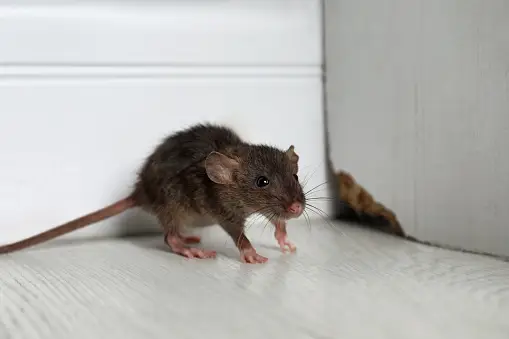Common Spring Pests in Indianapolis and How to Identify Them
As temperatures rise, spring pests emerge in full force, invading homes, gardens, and outdoor spaces in search of food, water, and shelter. Identifying these pests early can help prevent costly infestations. Here’s a breakdown of the most common springtime invaders in Indianapolis and what to watch for:
1. Ants: Persistent Home Intruders
Ants are among the most common spring pests, invading kitchens, pantries, and even structural wood in search of food and shelter.
🔹 Carpenter Ants – Unlike termites, these ants don’t eat wood, but they burrow through it to create nests, causing structural damage over time. Look for tiny wood shavings (frass) near baseboards, windowsills, and wooden furniture.
🔹 Pavement Ants – Typically found near driveways, patios, and sidewalks, these small brown ants often sneak into homes looking for sweets, grease, and crumbs. They form visible trails along floors and countertops.
🔹 Odorous House Ants – Commonly called “sugar ants,” these tiny pests emit a rotten, musty smell when crushed. They invade homes in large numbers, particularly after heavy rains, and target baked goods, fruit, and pet food.
2. Spiders: Unwanted House Guests 🕷️
While most spiders are harmless and help control insect populations, some can become a nuisance, and others pose health risks.
🔹 House Spiders – These web-spinning pests prefer quiet, undisturbed areas like corners of ceilings, basements, garages, and storage closets.
🔹 Brown Recluse Spiders (Venomous) – Identified by their light brown color and violin-shaped marking, these spiders hide in dark spaces like attics, closets, and beneath furniture. Their bites can cause serious skin reactions and require medical attention.
🔹 Wolf Spiders – Unlike web-building spiders, these large, hairy hunters roam gardens, garages, and sheds. They are fast-moving and tend to hide in leaf litter, mulch, and woodpiles.
3. Centipedes & Millipedes: Moisture-Loving Crawlers
Both centipedes and millipedes thrive in damp environments and are commonly found in basements, bathrooms, and gardens.
🔹 House Centipedes – These fast-moving, long-legged insects prey on smaller pests like cockroaches and flies. They are often found in bathrooms, kitchens, and dark storage areas where moisture levels are high.
🔹 Millipedes – Unlike centipedes, millipedes are slow-moving scavengers that prefer to feed on decaying plant material. They are commonly found in damp basements, garden beds, and compost piles.
4. Garden Pests: Threats to Your Plants
Springtime also brings pests that threaten outdoor spaces, feeding on garden plants, flowers, and even fruit trees.
🔹 Aphids – These tiny, soft-bodied insects cluster on leaves and stems, sucking the sap out of plants and causing wilting, yellowing, and stunted growth.
🔹 Earwigs – Identified by their pincer-like appendages, earwigs chew on flowers, seedlings, and vegetable plants, leaving behind irregular holes in leaves.
🔹 Slugs and Snails – These slimy pests feed at night, leaving large holes in leaves and stems and shiny slime trails on plants and walkways.
Proactive Pest Prevention: Keep Your Home and Garden Protected This Spring
Taking preventative measures is the most effective way to ensure that springtime pests stay out of your home and away from your garden. By eliminating entry points, removing attractants, and maintaining a pest-free environment, you can enjoy the season without unwanted invaders. Follow these key steps:
1. Seal Entry Points to Keep Pests Out
Small gaps and cracks around your home provide an easy way for pests to get inside. Blocking these entryways is your first line of defense.
🔹 Foundation Protection – Seal any cracks or holes in your home’s foundation using caulk or expandable foam to prevent ants, centipedes, and spiders from sneaking inside.
🔹 Window and Door Security – Repair damaged window screens and replace worn weather stripping around doors to prevent flying insects and crawling pests from slipping through.
🔹 Door Sweeps & Thresholds – Install door sweeps on exterior doors to block gaps where pests can crawl through, especially at ground level.
🔹 Vents & Utility Openings – Inspect dryer vents, attic vents, and gaps around pipes for openings. Use steel wool or fine mesh screens to seal them off while maintaining airflow.
2. Reduce Moisture to Discourage Pest Activity
Many pests, including ants, centipedes, millipedes, and spiders, thrive in damp environments. Reducing moisture around your home makes your space less inviting to these unwanted guests.
🔹 Fix Plumbing Leaks – Check and repair leaks in pipes, faucets, and outdoor irrigation systems to prevent standing water, which attracts pests.
🔹 Maintain Clean Gutters – Clear leaves, debris, and blockages from gutters to avoid water buildup that creates breeding grounds for insects.
🔹 Improve Drainage – Ensure your yard has proper drainage to prevent puddles and excess moisture that pests love. Avoid overwatering your lawn and garden.
🔹 Control Indoor Humidity – Use a dehumidifier in basements, crawl spaces, and bathrooms to keep humidity levels low and deter moisture-loving pests.
3. Secure Food & Waste to Prevent Infestations
Pests invade homes in search of food, and even small crumbs or accessible trash can attract them. Proper food storage and waste management can make a big difference.
🔹 Store Pantry Items Securely – Keep dry goods like flour, sugar, and cereal in airtight containers to prevent pantry pests like ants and moths.
🔹 Keep a Clean Kitchen – Wipe down countertops, sweep floors, and clean up spills immediately to eliminate food residue that attracts pests.
🔹 Proper Trash Management – Dispose of garbage regularly, using bins with tight-fitting lids to prevent pests like ants and cockroaches from scavenging.
🔹 Pet Food Storage – Avoid leaving pet food out overnight, and store it in sealed containers to keep pests away.
For long-lasting, eco-friendly protection, Mint Pest Control’s EcoBloc Technology creates a safe, pest-free barrier around your home. Get ahead of spring pests today! 👉 [https://mintpest.com/indianapolis-pest-control/ ]

